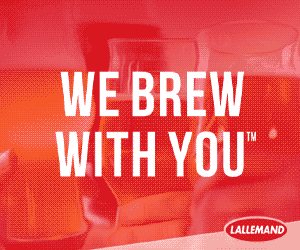Question About Cleaning Copper
Q: I am relatively new to homebrewing and recently bought a copper immersion chiller. It works great for wort cooling, but looks really brown after it dries. Is this something I need to clean off before using the next time I brew?
— Pierre Vanden Borre • Gatineau, Québec
A: Many brewers and cooks love copperware for its heat transfer properties and attractive appearance. One of the downsides, however, to copper is that pretty, honey-like color turns brown over time and requires polishing to restore the shine. And sometimes, the brownish tint turns green. The good news is that brown and greenish-brown copper surfaces are normal and have no negative effects on brewing. Copper, like most metals, is covered with a visible oxide film. In the case of copper, this film is smooth and brown in color. Over time, the brown film on copper may turn green from sulfur in the atmosphere raining down on exterior surfaces such as gutters, cupola roofs, weather vanes, and sculptures.
Let’s talk about cleaning of copper brewing tools. The most common uses of copper for brewing equipment are brewhouse vessels, especially brew kettles, coolships, Baudelot (falling-film) wort coolers, and, in the case of homebrewing, immersion chillers. One commonality of all of these brewing tools is that they are used on the hot side of brewing in contact with wort (as opposed to beer) and the surfaces that do touch wort are visible. Copper is a good fit for these uses because all benefit from copper’s high thermal conductivity and all are exposed to hot or, in the case of Baudelot chillers, hottish wort. The easiest and most effective way to clean copper vessels and coolers is by using a mild cleaning solution, like sodium carbonate, with some gentle scrubbing with a non-abrasive brush, followed by a water rinse. Strong alkaline cleaners, such as sodium or potassium hydroxide, and acidic cleaners can damage copper. Breweries with real copper brewhouse vessels, as opposed to stainless tanks with copper façades, usually use special cleaners with corrosion inhibitors to prevent their beautiful vessels from slowly wearing away.
Without going down a rabbit hole, it is worth noting that here in the states, the U.S. FDA (Food and Drug Administration) restricts the use of copper in commercial food processing to foods with pH > 6.0, with the exception of brewing, where copper is a permitted wort and beer contact surface. This is because copper can be toxic to people and because acidic liquids dissolve copper from the surface of metals. Copper can also oxidize beer, so very little copper equipment is found in breweries after wort cooling.
The topic of toxicity sounds a bit scary, but a survey of commercially available beers in 2017 found beer copper levels below World Health Organization guidelines for drinking water (Journal of Brewing & Distilling, Vol. 7(1), pp. 1-4, March 2017). There is a benefit to having some copper in wort because copper binds sulfur produced in fermentation. In fact, stainless steel brew kettles often contain sacrificial copper parts or strips specifically for the purpose of adding a bit of copper to wort for sulfur binding. But again, once fermentation is complete, brewers do not want beer to contact copper because copper can oxidize beer.
The next time you use your copper wort chiller, thoroughly rinse after use, clean with a mild detergent and a sponge or brush, rinse, dry, and store. And no worries about the patina, as the brown is just copper oxide. The great thing about immersion chillers is that the sanitizing step occurs immediately before use by simply submerging in the wort during the last 5–10 minutes of wort boiling.



